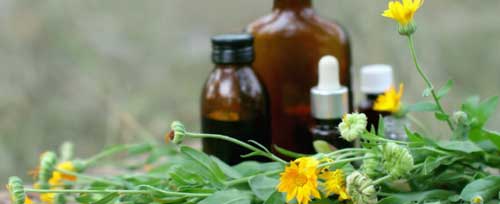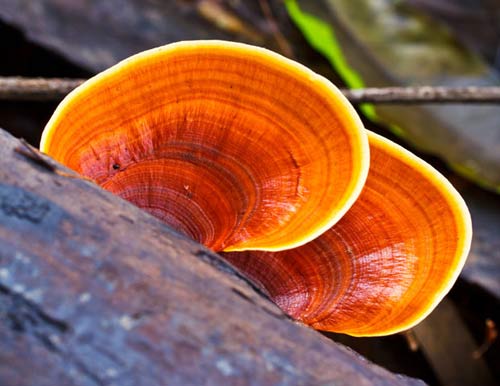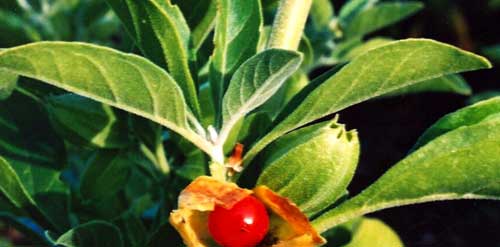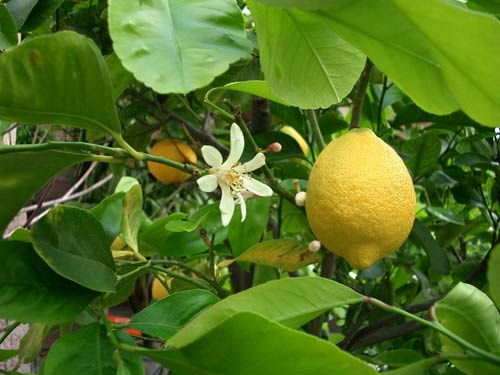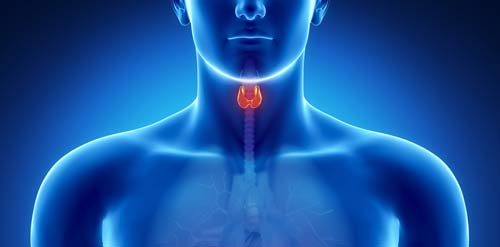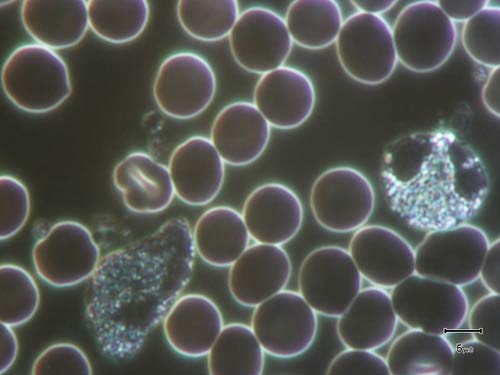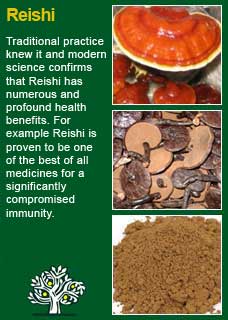
|
|
||
| Our Pages ABOUT CONSTITUTIONAL MEDICINE
|
Vitiligo is a serious condition, not because it is a problem that causes physical pain but because it can cause great emotional distress. As it says in the 'bible' of modern medicine, the Merck -- 'the disease can be psychologically devastating'. Much of what's written in this article is entirely suitable for a person to work through themselves but, especially if things are quite bad, or you just know that you need further help, then there may be a great deal of benefit to you to go to whatever lengths necessary to find a good herbalist to guide you on to a safe and strong treatment program. There's a short write-up to suggest how you might go about finding such a person here Obviously, I am focusing on vitiligo in this article, but for anyone who would like to read more on the complex, tricky subject of auto-immune conditions, I have some further thoughts on the site here
Before I go on I also want to give a quick caution on two products that you will frequently see being recommended for Vitiligo; Khellin & Cortisone: The old tradition of medicine takes to heart the rule 'primum non nocere' which means firstly do no harm, more on this subject here, consequently I could not recommend anyone to take Khellin for their vitiligo as there is much too strong a chance that it could cause liver damage. Cortisone
The treatment of vitiligo with a natural approach takes time and commitment but, if the person is ready to put in the work, then past experience suggests that it may be highly worth their making the effort. Of course, nothing works for everyone and, whilst there are some general recommendations given further below that may be of value to many, the following two case histories are given for two reasons. Firstly, to give some encouragement in what can be a most depressing diagnosis, by showing that things really can get better for some people, secondly to demonstrate just how differently a successful treatment may need to be, depending on the individual case. I first met Sandy when she was in her early 20s. She was of mixed ethnic heritage and naturally had quite dark skin, and to say that she was upset about the vitiligo that was developing in tiny patches over her body, hands and neck would be an understatement. She was terrified, in constant anxiety about it and, in her own words, was 'obsessing' over looking at the patches that were already there, imagining them growing overnight and looking for new ones at least once a day, usually more. In no small part because of the images she had seen on the internet, Sandy had convinced herself that her condition was going to permanently disfigure her and that she would have no chance of meeting someone, having a family, having the life she wanted. We carefully picked through her health history, when and how it began, what if any clues there might be going all the way back into early childhood that might help us understand why her immune system had become so badly out of sync with her body that it could have started to attack her melanocytes, her pigment producing cells. Sandy had experienced some quite mild eczema as a child with small outbreaks occurring sporadically behind her ears and sometimes around her lips when she was a teenager. She had also had considerable trouble with her periods in her early teens; excessive cramping and pain as being highly irregular; anything from 20 to 40 days. Consequently, her GP had put her on the pill when she was 16. Sandy was obviously in a bad way in her nerves, but as best as I could gauge it, this was an effect of her condition and that, prior to the first outbreak and over the next couple of years, she had overall been in a good place both mentally and emotionally. The most likely causes for her immune dysregulation appeared to be allergy based (the eczema) and a hormonal imbalance that had not been able to work itself out before the oral contraceptive came in and forced the issue. We started with the following treatment plan
We make our own tinctures from organic dried herbs, so it might be important that you understand that the optimal dose range will vary with different preparations made by different companies or practitioners, The above liquid extracts were combined into a formula to make 540mls. This will just fit in to a 500ml amber pharm round bottle and is enough to last 28 days if taken at the maximum safe and effective dose of 10mls twice a day, which is what we used. Sandy was an Elephant/Butterfly constitution (more about that later), hence Dong Quai was a particularly good fit for her both hormonally and for her general health. The Withania, Astragalus and Licorice root have supportive, strengthening actions on the immune system, the Chamomile and Agrimony have healing effects on the GI, the gastro-intestinal tract, and the Chaste tree is a potent hormonal balancing herb, one that we used pulse testing to try to be sure was a good match for her. That ancient and enigmatic process is written up here and any of the herbs can be learned about further in the A-Z here
Two capsules, twice a day. The concentrates of these herbs were to both nourish her blood and to support her immune system to be healthier and less reactive. I write more about Reishi later under general recommendations. As with all our encapsulated herbs, we get organic concentrates, with one or more active ingredients standardised to a high level, and then send them to a local factory to be put into capsules.
The above medicines were to try to treat the imbalances behind the vitiligo. Even if I thought that stress was not a primary cause to her condition, it certainly couldn't be helping it and might well be making it worse. Hence, we gave an equal importance in the beginning of our treatment plan to work on reducing the anxiety and getting into a better head space internally. A free and frequent use (meaning she could take it as much as she liked) of the relaxing tea formula, as written up here and a free and frequent use of the potent drops of the relaxing herbal formula were warmly advocated. More information about the drops, and an outline of some of the suggestions that we used alongside them, is written up in the detailed article on anxiety found here The first step in healing is the one in which Nature can help us back to health. We come to a point where we need to ask for help and then these ancient allies, these herbs, are there to support and help us to get well. The first step for Sandy was simply to let Nature in and take the prescription as shown above. The next step is what I call the 'work'. It is what the patient does to help themselves. Underlying all the old ways of healing is an understanding that living organisms have the innate ability to self-regulate and self-repair, unless something is obstructing that healing intelligence. The 'work' is usually about doing something that helps to remove the obstacles that are getting in the way. In Sandy's case I felt there was certainly one, and that there were probably two underlying issues to her body's worsening condition and her inability to self-repair things back to normal. If she had eczema as a child then some kind of allergy was a certainty and, whilst it may well have been to environmental factors as well, there is almost always a significant component of food intolerance in the eczema picture. In some cases, usually because of financial restrictions, we will go through the difficult but accurate process of the 'elimination and challenge diet'. In Sandy's case we elected to attempt the more expensive but usually reliable method of blood testing for IgG intolerances, which in her case picked up reactions to wheat, gluten, eggs and peanuts. This process and some important information related to the subject in general, is written up in detail here The second area that I felt was a probable issue for Sandy was to do with hormonal imbalance and how much this has the potential to significantly disrupt immune health and balance. One can only speculate about such matters, there is no way to do a definitive test or get a certain answer, but what could be said, in the case of Sandy, is that her system had been well out of balance from an early age and that nothing had been done to help this essential, regulatory part of her body to sort itself out. Maybe that was why things were worsening too, that she had been on the pill for long enough for whatever it was that was underlying the issue, and that wasn't finding any way to change or adapt to her growing body, to become bad enough to trigger off a worsening immune balance. In any case, the work, or the challenge if you like, was for Sandy to go off the pill, as soon as she was ready, with the view that if her body could find its own balance within its endocrine system, its hormones, then it could be more able to find its balance in its immunity. I saw Sandy a total of 5 times over the following nearly 2 years. One thing must be made abundantly clear to anyone who would embark on a holistic treatment of vitiligo and that it is that there are no quick fixes. Firstly, you are hoping to see a cessation of the worsening of the condition, secondly you are hoping, above all, to see a re-pigmentation of the affected areas. Sandy achieved both. Her vitiligo appeared to stop spreading fairly early into the treatment course and, after about 6 months, she came in with visible delight on her face to show me how some of the spots had filled back in with colour. Joy would be the word for it. I cannot say how much it was the diet or her getting her hormones into balance (we used some further herbal treatments to help with this process that I won't go into here but the kinds of things we did can be seen in the article on the premenstrual syndrome found here In recent times, I have had cause to meet with Sandy's new husband and the father of her two children. What I am recounting above was well over 10 years ago at the time of writing. I have asked after her a couple of times, her skin is great, it didn't come back. By no means can anyone expect a cure from vitiligo, but Sandy's is a true story of how it can happen.
Alysha's is a more recent case but again, she was only in her early 20s when we first met. I want to recount her story because we eventually achieved a good result there too, but also because the treatment was so very different and it should well illustrate how varied a successful approach may need to be, There was no history of any childhood allergy or other kind of immune related illness to point us in the right direction in Alysha's case. What did jump out from her case history was that she had experienced a nasty injury (from skateboarding) that had damaged her knee and broken a lot of skin over her knee and thigh and that, several months later, this was where some large patches of vitiligo first appeared. It was a source of astonishment to her and her family when, a few months later again, the same kinds of patches started to appear on her other leg, and then how it travelled at a galloping pace to her ankles and calves, up around her hips and then to her shoulders. She had been to dermatologists and had tried some of the usual treatments without any success, and being a rather 'natural' girl, nor did she want to start using a lot of cover-up cosmetics, but It was when she began to get some dots on her neck and forehead that she began to get seriously worried and so came to seek some alternate viewpoints on what might help. Aside from the trauma of the injury, and how that might have adversely affected her immune system, the only other major factor in her health that I thought might have been a contributing issue was her fairly heinous sleep schedule. Alysha was an Eagle constitution, again more about that later but, as it quite typical for many Eagles, she was a dedicated insomniac from a young age and it was certainly possible that this was a disruptor for her immunity.
The above liquid extracts were combined into a formula to make 540mls and were enough to last 4 weeks if taken at the maximum safe and effective dose of 10mls twice a day. Remember that make our own tinctures from organic dried herbs, so the optimal dose could vary with different preparations made by different companies or practitioners. Withania and Astragalus were in Sandy's formula too. No one thing is right for everyone, but these two herbs are rather ideal for a stressed, dysregulated immune system, from any cause or in any constitution. At the least they deserve some further investigation from anyone who is seriously interested in treating vitiligo from the inside. Skullcap and Lemon Balm are two of the best 'Eagle' herbs for a person who is overly uptight or overwound, they nourish and calm a nervous system that is running 'too hot!' Calendula is a remarkable remedy in its own right, it stimulates healing at all kinds of levels and was included for its energetic properties as much as anything, in light of her history. The Peppermint is there to make it all a lot more palatable, mostly I use Licorice in that regard, to blend and soften the taste of a fomula, but some people will prefer you to use Peppermint for the same purpose.
Two capsules, twice a day. As with Sandy, the concentrates of these herbs were to nourish her blood and to support her immune system to be healthier and less reactive.
One capsule, twice a day. Really it is the Ginkgo that we wanted to help her vitiligo, and the reasons for that are explained below however, it would do her no harm to have the great brain tonic Bacopa as well, and it so happens that our clinic does not have Ginkgo by itself because I so often like to use it with Bacopa, hence they are formulated together into these concentrated capsules. The work for Alysha was two-fold. Firstly, I had to suspect that her body has somehow sustained a trauma from her skateboarding accident that it had experienced problems resolving. I recommended her to visit with a colleague of mine with a view to do 2 or 3 body-work sessions that might help her process any physical residue from her injury. Secondly, we needed to work on the health of her sleep. I do have some herbs and preparations that are specifically to help with this issue, but part of the art of successful herbal medicine is that not doing too much is as important as not doing too little, and I felt that her treatment program was full enough with herbs that were specifically for her condition itself. The work around improving sleep was to do with finding more natural ways to land in the latter part of the evening (she was on devices all the way up until her bedtime and then couldn't sleep for hours, and would usually give up and go back to her phone or laptop. Alysha needed some new habits, we set up a range of options, i.e. painting, reading, listening to music, meditation etc. and she was to take a 'try and see' approach until she found what worked best for her. As it happens, I only had 3 visits in total with Alysha, which is unusual in treating something as chronic and tricky as vitiligo. As many an Eagle before her, she improved rather quickly when she got on to the right 'flight-path'. The condition, that really had been advancing at a rapid rate, stopped getting worse and that was more than enough encouragement for her to keep taking her herbs and to keep looking after her relaxation and sleep needs. I saw her a month after the first visit and then not again until nearly 8 months later. She came in and was clearly highly delighted to show me that she was getting significant re-pigmentation happening in numerous places around her body, including in the initial and most widely affected area around her knee. I told her that she was in charge of how long she kept using the herbs and to stop and see if her body missed them as soon as she was ready. Surely, if the immune system can go out of order and start attacking its own body cells, it can right itself and, if they are not completely destroyed, the regeneration of the remaining melanocytes can repigment the skin. By no means have all the cases I have treated with vitiligo been as successful as Sandy or Alysha, nor have they been the only ones to have had excellent results either. I will go on now to make some general recommendations but my main point here is that, whilst clearly each case really needs an individualised approach, is that I want to tell anyone who is reading this, for themselves or someone they care for, not to be too quick to give up to hopelessness or negative expectations from what you read on the internet about this condition. Yes, it is tricky and there are many mysteries about why it happens in the first place, but it is not inherently incurable as the above cases, and others, have shown.
I mentioned above that Sandy was an Elephant/Butterfly and that Alysha was an Eagle constitution. This ancient way of understanding our differences, according to how we are naturally either hotter or cooler, and at the same time dryer or damper, underpins much of the understanding and approach of what kinds of foods, herbs etc, will best help a person and there will likely be much benefit, if you, or someone you care for, are having troubles in this area, to learn more about the general subject of the constitutions starting here, and then working out which constitution you or they are by going here
After getting a sense of whether a person is naturally cooler or hotter, dryer or damper, the next level of knowledge to take the kind of personal approach that can be essential to a great result is to look into the healing cycle. This is a fascinating subject in itself and understanding it can give great insight into what needs to be done to treat the cause and help healing happen naturally. There are four stages in the cycle; cleansing, activation, nourishment and rest and to learn more about the cycle of healing read here
I trust that you will understand from the above that the holistic treatment of vitiligo requires an individualised approach that works alongside the person wherever they are at and, as mentioned at the beginning, if your condition is very bad or you know you need some guidance in person, then I hope you will be able to find a good herbalist who will get involved and guide you to getting and doing whatever you need to get well. However, it also may be that the condition is not so severe, or even that it is but you just don't have the option of working with a holistic practitioner. In these instances, I want to share some general suggestions, starting with some medicines from Nature, mostly already mentioned in the case histories, that have a good chance of being of help, perhaps considerably so.
The first general recommendation is the internal use of Reishi mushroom. There is something rather extraordinary about these medicinal mushrooms in the way they can help to both strengthen and at the same time settle an imbalanced immune system and this property may be of much help to a person suffering from vitiligo. There are a great number of Reishi products on the market. Some will be very good, some will be poor, consult with a herbalist if you can otherwise a certain place to get excellent Reishi is from JHS in the USA. http://www.jhsnp.com/ a company that only does mushrooms and does them very well. To learn more about Reishi read here
The second general recommendation is to consider using the herb Ginkgo Biloba as an internal medicine. There have been two small but good-quality human trials using Ginkgo for vitiligo with enough of a positive result that make it certain that there is something helpful going on here. The first trial was in India and the second one was in Canada; both showed modest but significant improvements with vitiligo through the use of Ginkgo. There are many commercial Ginkgo products on the market so, as always, it is hard for the buyer to know which is the best one, or even which ones are reliably what they say they are! What I can suggest is that the internationally active company Nature's Way make a good Ginkgo called Ginkgold. Note that, as with the mushroom company recommended above, I have zero financial involvement with this company whatsoever. More on Ginkgo here
You can see that these two herbs featured prominently in the case studies above. They are not so well-known and therefore not so easily available commercially as the Reishi or Ginkgo, but they are certainly out there, and both have a high level of safety for anyone to use. It should be noted that quite high doses, as shown by example in the above formulas, are necessary to get their full benefits. The great advantage with both Withania and Astragalus is that they have what is described as an 'adaptogenic' effect on the immune system. What this means is that if the system is flagging, needing strengthening, then they will lend a reliable hand but equally, if the system is overactive, needing calming, they will just as surely have a positive influence. I would personally not be without them in treating most auto-immune conditions and am sure they have been a large part, of why so many people who diligently use them each day over an extended period have made such marked improvements in their general health as well as their specific condition. You can read more about Withania root here and Astragalus root here
Lastly, I want to tentatively recommend an external treatment that may help. I say tentatively because this treatment needs to be used with care and caution but also because I am sensitive to the fact that the general approach to any kind of skin condition is from the outside in and that, despite how back to front this really is, that many people, including the doctors and specialists who work in this area, put far too much emphasis on there being an external answer for a problem that comes from within. The expectation that the right topical product will eventually resolve a skin problem is a core reason why many people don't make the necessary enquiries into what needs to shift at a deeper level. All that said, it may certainly be worth experimenting with the essential oil of Bergamot to see what it may be able to do to help. Bergamot oil has substances in it called bergaptenes that have a strong ‘photosensitising’ effect on the skin. That means they make the skin more vulnerable to ultra-violet light. This is bad news if you are vulnerable to sun-burn and it is the reason that much of the commercial sale of Bergamot oil will have ‘Bergaptene-free’ in the fine print. If you will try this treatment, then you will need to carefully check that a bergaptene-free oil is not the one you get. The ‘photosensitising’ action is exactly what may help turn back on those pigment-producing melanocyte cells that are themselves activated by ultraviolet light. The technique is simple and easy to sustain for the kind of time frame you might need to get this to work. Take any kind of skin cream, moisturiser, carrier oil, basically anything that can work as a mixer, and put the drops of Bergamot oil into it before you apply it to the areas of your skin that are affected by the Vitiligo. It is difficult to be specific with amounts here because each person will vary but as a general guide if I was treating an area the size of a large coin I would want 2 or 3 drops of the bergaptene-containing Bergamot oil to be in the mix of the carrier cream. For a larger area, for example one that covered the size of the palm of a hand, I would want to use about 8-10 drops of the Bergamot oil in the carrier. These are strong concentrations of essential oil and you need to know that for some people with sensitive skin these amounts might be too strong. The way to go about this safely is to ‘patch-test’ your skin with a smaller amount and a weaker concentration of the Bergamot to see how your body feels about it first. Bergamot smells pleasant so is not a hard thing to have on you in that sense but it also needs to be understood that the action of the oil will not last more than an hour or so. You need to have placed the Bergamot oil in its carrier on the skin and be exposing the affected area to sunlight within that one-hour time frame. How long you should then have your skin in direct sunlight also depends on too many factors to make specific recommendations here. How fair are you and so how prone to sun-burn? What time of day or time of year is it? Getting too much sun will be just as harmful as not enough. You must already be aware that the loss of pigmentation means you are much more vulnerable to actual sun-burn. Let common sense be tinged with caution and above all be patient, this process is far more likely to help with a small regular exposure of sunlight over a period of many weeks to some ‘Bergamot-primed skin’ than it will over a time frame measured in any number of days.
One or more of the above approaches, preferably a combination of them, may help and, purely by virtue of having helped others they are surely worth trying. However, there can be no guarantee that they will work and, problematically, they need to be taken for very long periods of time to give them a fair trial. How long? I would say a minimum of 6 months to be sure. Consequently, and especially with such uncertainty, it may be far more practical and prudent to do whatever is possible to treat the suspected cause of the immune system becoming so imbalanced as to give rise to vitiligo in the first place. This is not a cut and dry matter either, some speculation is bound to be a part of it. But do not let that stop you. One of the oldest and most reliable 'rules' of healing is that if you treat the cause then you may achieve a cure. At some point in time, for some reason, the immune system takes up arms against a select few of the body's own, pigment-producing, skin cells (the melanocytes) and damages them to the point that they stop producing colour; why? Let's go over the main reasons that seem to come up for the majority of people.
Both gut dysbiosis (an overgrowth of an unhealthy microflora in the gut) and food allergy/intolerance are major disruptors of normal immune function in a great many people. Only a fraction of them will go on to get an auto-immune condition but some certainly do and this area always needs to at least be carefully ruled out for anyone who is serious about finding the cause of their vitiligo. Dysbiosis and food intolerance are actually two quite distinct issues, but I've put them together here because they frequently share the same kind of symptoms with indigestion, bloating and disturbed bowel function. If a person has a history of a nasty or lingering gut infection within a year of their first noticing depigmentation then dysbiosis should be strongly suspected. Sometimes, the best way to rule it out is to treat it with some safe and natural methods and just observe what benefits are achieved by it. No harm will come to a person if they improve the health of their 'microbiome' their internal flora, and if it was something that they badly needed then they will get great benefit from it. The 'how-to' of subject is written up in depth here If a person has any history of eczema or asthma in their lives, then food allergy or intolerance must be considered as a highly likely cause of the immune imbalance behind their vitiligo. Migraines are another pointer for some people. Those are not the only clues. Recurrent infections, gut disturbance, excess inflammation in the joints or the skin are other signs that can point towards the diet as potentially being the core issue that needs attention. This important subject is discussed further in practical depth here
Some honest soul-searching can be required to get to the heart of this matter but if, to the best of the person's recollection, the vitiligo began soon after a time that they were experiencing some particularly intense stress in their lives, then there must be consideration of the possibility that stress is the key driver behind what the dysregulation of the immune system. If this is the case, then by all means meet with it head on. This is never an insoluble problem, whatever the outside circumstances might be. The best of what I know works to help a person release tension and reduce anxiety is written up in detail here
As with the case of Sandy above, sometimes the case history shows patterns that suggest the vitiligo is related to hormonal imbalance or sudden change. I can recall one case in which it began during pregnancy and another case where it had been slowly developing for years only to finally stop in its tracks when the woman became pregnant. Along with female reproductive hormones, another potential hormonal trigger to consider is the state of the thyroid gland. Some authors on auto-immune conditions believe that undiagnosed thyroid illness is a major driver to immune dysregulation, citing cases in their own experience where improving thyroid health has resulted in significant turn-arounds to the condition. is. As also linked above, particularly if the premenstrual syndrome seems like it might be an underlying issue then there are both foods and herbs that are likely to help written up here
The 'post-viral syndrome' is a fairly loose description of a condition whereby a person has had a severe viral infection (glandular fever being the most common one) and their health has never been right since. Again, it is a matter of carefully asking the right questions. the chief hallmark of the post-viral syndrome is fatigue so, If the person with vitiligo can trace back a break-down of their general health and well-being to an illness after which they have 'never been right since', and the patches of vitiligo have developed along the way, then this must at least be considered as a possibility for what's gone wrong. Building healthy immunity is a strong suit of herbal medicine. I'm sure it is why herbs such as Reishi, Astragalus and Withania have been able to be of so much help to some people. Another powerful strategy is to use something called 'sweating therapy', where the person creates a controlled fever in order to jolt the immune system out of the rut it can get stuck in. This process is described in detail here and more information on building up immune health is found in the article here
I sincerely hope that the above information will be of help to you or someone you care for. |
|
|
© 2011 R.J.Whelan Ltd




